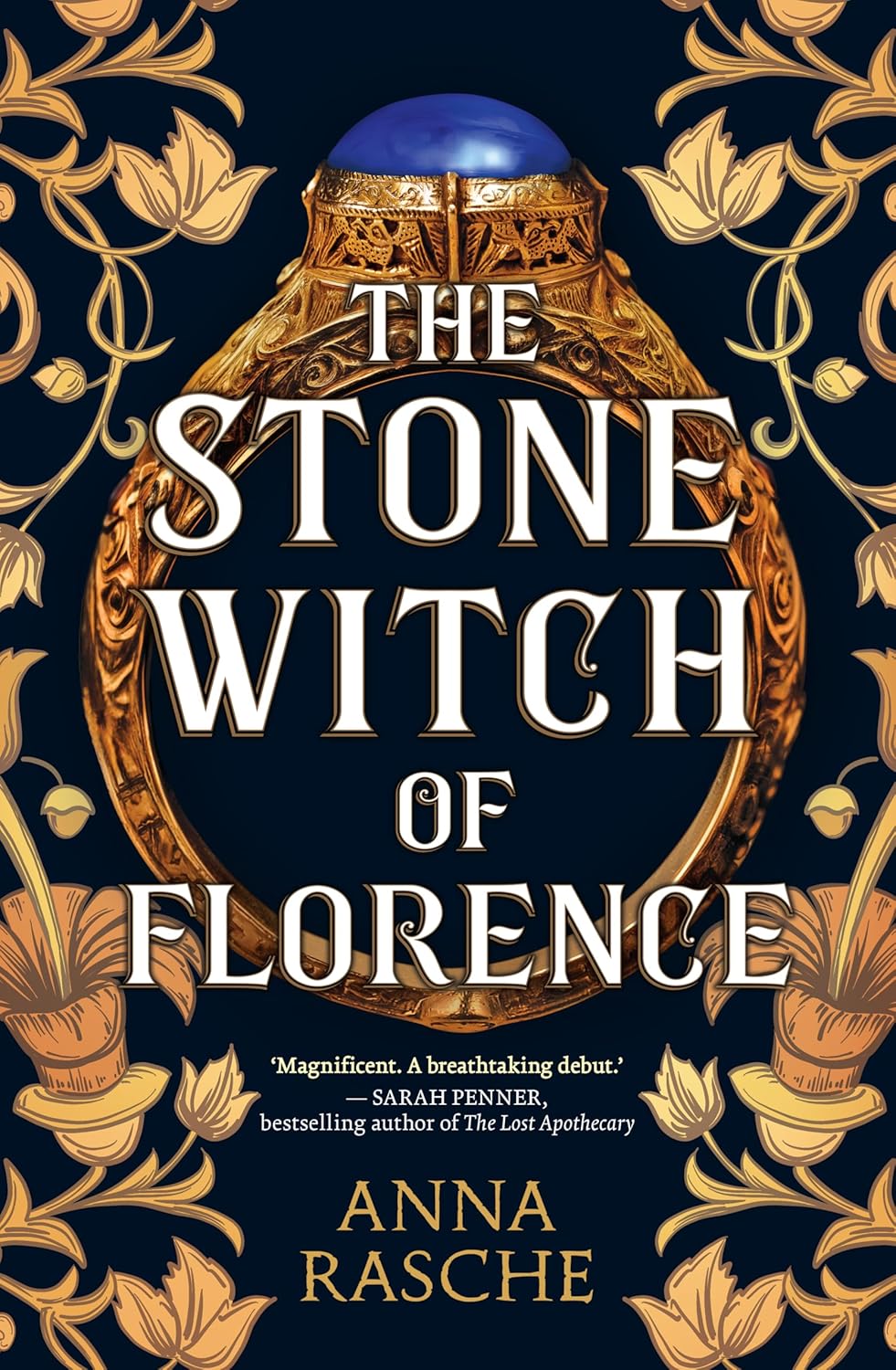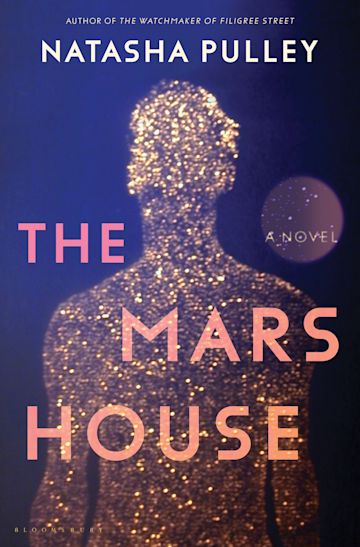The Stone Witch of Florence: A Novel
- By Anna Rasche
- Park Row Books
- 368 pp.
- Reviewed by Olesya Salnikova Gilmore
- December 9, 2024
A woman seeks to save her beloved city from plagues and misbehaving men.

In 14th-century Florence, Ginevra di Gasparo, a healer with power over gemstones, is condemned as a witch and exiled. But when the Black Death comes for the city, as does a thief who steals holy relics from its churches, Ginevra is summoned back to find the bandit and hopefully regain her reputation — along with entrance into the Guild of Doctors, Apothecaries, and Grocers, a nearly impossible feat for a woman.
Though the plot of Anna Rasche’s The Stone Witch of Florence is at times a little convenient and Ginevra at times a little lost, the novel is a surprisingly humorous, feminist romp through medieval Italy, complete with a unique magic system and a setting that both immerses readers in the distant past and echoes our own times.
Ginevra’s story unfolds in two timelines: the present, the summer of 1348; and the past, starting in 1330. In the latter, she is young, idealistic, and naïve. She recognizes that men like her father have “a limited view of what women could comprehend and accomplish,” and that “men [are] wrong.” Fast-forward 18 years: Ginevra is back in her hometown of Genoa. She is reticent, reflective, and does “not seem pleased to be found” by the authorities from Florence. But she isn’t satisfied living on the fringes of society, “[t]he full extent of her talents hidden,” after years of “doldrum days and lonely evenings.” She wants a “full and visible life…with love and with friendship.” Thus, she agrees to return.
As Ginevra hunts for clues to the stolen relics in the hope the city’s bishop will reward her, she meets a colorful cast of characters, including Lucia (a quirky, proper noblewoman who is fabulously stuck in her anti-feminist ways yet manages to outdrink a drunkard), Becchino (a gravedigger with a hilarious penchant for morbid, bawdy songs), and Fra Michele (an inquisitor with a drinking problem, a terrible fear of plague, and a heart of gold). They provide a light, even warmhearted note to what would otherwise be a plague-heavy book.
At times, the grownup Ginevra is still naïve, even after being humbled by past mistakes. And she and her friends tend to fumble in the dark for answers. To that end, much that happens in the plot is accidental. For example, Lucia stumbles into just the right people at a tavern who tell her just the right piece of information before, in a drunken stupor, she staggers into just the right church the thief happens to be at work in.
The ever-shifting third-person point of view further adds to the remove between the characters and their decision-making, as well as to the feeling of a deus ex machina at play. But the setting impresses, as does the worldbuilding. Florence is rendered in dazzling detail, including depictions of the churches, palazzos, and winding streets I remember from my own visits to the city. And I practically salivated over Rasche’s descriptions of the delicious foods arrayed at an illicit feast held in a grand palazzo.
The medieval world is likewise expertly drawn and the system of magic refreshingly distinctive, thanks to the author’s background as a gemologist and jewelry historian. I loved learning about the role gemstones once played in healing, something I’d never heard of before. The explanation in the author’s note about the historical use of gems, each with their own significance and mystical properties, was excellent (as was the note itself).
The accounts of the Black Death are horrific; the alienation, loneliness, and emptiness of a city with most of its inhabitants fled or dead — and the suffering of ordinary people juxtaposed with the selfishness of the rich — mirror our own pandemic experience. But the anguish is balanced with the markedly human moments of love, friendship, humor, laughter, and light that occur even in apocalyptic times.
It all gives a fun, mixed-genre feel to book, with each element working well within the whole. The accounts of plague-induced swellings, as well as of saints’ various lopped-off body parts, read like horror. The dread, dark feel of Florence, like gothic literature. Ginevra’s healing magic, like fantasy. The well-researched setting, like historical fiction. And the coziness? Like an enchanting, almost feel-good tale. While modern-sounding words sometimes broke the spell, the resonating timelessness of the prose quickly allowed me to sink right back into the story.
Ultimately, The Stone Witch of Florence was a satisfying, immersive read about a woman fighting not only for the city of her heart and the people she loves, but for a place in society for herself and her talents hard-won through much sacrifice — something true for women to this day.
Olesya Salnikova Gilmore, the author of the novels The Witch and the Tsar and The Haunting of Moscow House, is a lawyer living in Chicago. Originally from Moscow, she writes speculative historical fiction inspired by Eastern European history and folklore. Her work has appeared in LitHub, CrimeReads, Reactor/Tor.com, Writer’s Digest, Historical Novels Review, Bookish, the Independent, and elsewhere.
.png)
